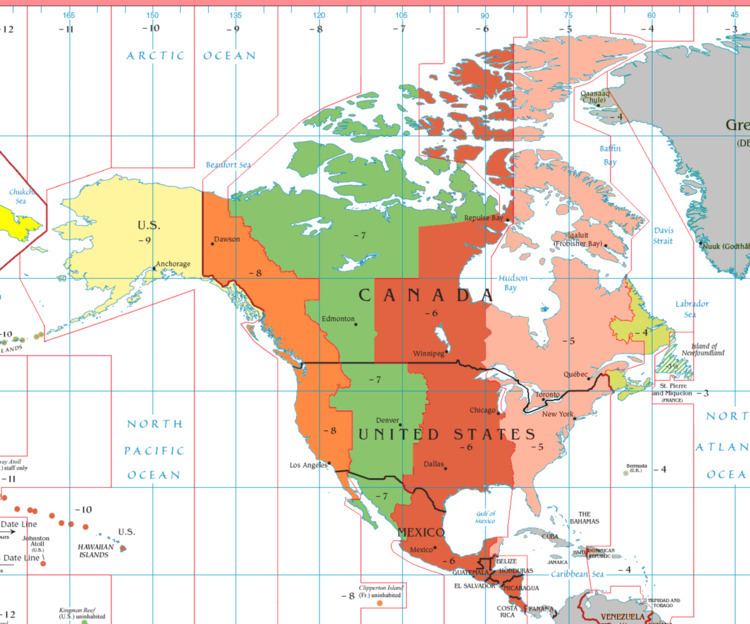MST UTC−7:00 DST began 12 Mar 2017 | MDT UTC−6:00 DST ends 5 Nov 2017 | |
 | ||
MDT 5:33 am on 20 Mar 2017 MST 4:33 am on 20 Mar 2017 | ||
The Mountain Time Zone of North America keeps time by subtracting seven hours from Coordinated Universal Time (UTC), during the shortest days of autumn and winter (UTC−7), and by subtracting six hours during daylight saving time in the spring, summer, and early autumn (UTC−6). The clock time in this zone is based on the mean solar time at the 105th meridian west of the Greenwich Observatory. In the United States, the exact specification for the location of time zones and the dividing lines between zones is set forth in the Code of Federal Regulations at 49 CFR 71.
Contents
In the United States and Canada, this time zone is generically called Mountain Time (MT). Specifically, it is Mountain Standard Time (MST) when observing standard time (fall and winter), and Mountain Daylight Time (MDT) when observing daylight saving time (spring and summer). The term refers to the fact that the Rocky Mountains, which range from northwestern Canada to the US state of New Mexico, are located almost entirely in the time zone. In Mexico, this time zone is known as the Pacific Zone.
In the United States and Canada, the Mountain Time Zone is one hour ahead of the Pacific Time Zone and one hour behind the Central Time Zone.
In some areas, starting in 2007, the local time changes from MST to MDT at 2 am MST to 3 am MDT on the second Sunday in March and returns at 2 am MDT to 1 am MST on the first Sunday in November.
Sonora in Mexico and most of Arizona in the United States do not observe daylight saving time, and during the spring, summer, and autumn months they are on the same time as Pacific Daylight Time. The Navajo Nation, most of which lies within Arizona, does observe DST, although the Hopi Nation, as well as some Arizona state offices lying within the Navajo Nation, do not.
The largest city in the Mountain Time Zone is Phoenix, Arizona. The Phoenix metropolitan area is the largest metropolitan area in the zone; the next largest metropolitan area that observes Mountain Daylight Time is the binational El Paso–Juárez area, closely followed by Denver, Colorado. TV broadcasting in the Mountain Time Zone is typically tape-delayed one hour, so that shows match the broadcast times of the Central Time Zone (i.e. prime time begins at 7 pm MT following the same order of programming as the Central Time Zone).
Canada
The following provinces and areas are part of the Mountain Time Zone:
Mexico
The following states have the same time as Mountain Time Zone:
United States
The following states or areas are part of the Mountain Time Zone:
Also, the unincorporated community of Kenton, Oklahoma, located in the extreme western end of the Oklahoma Panhandle, unofficially observes Mountain Time (as the nearest sizable towns are located in Colorado and New Mexico, both of which are in the Mountain Time Zone). However, the entire state of Oklahoma is officially in the Central Time Zone. Additionally, northwestern Culberson County, Texas unofficially observes Mountain Time.
